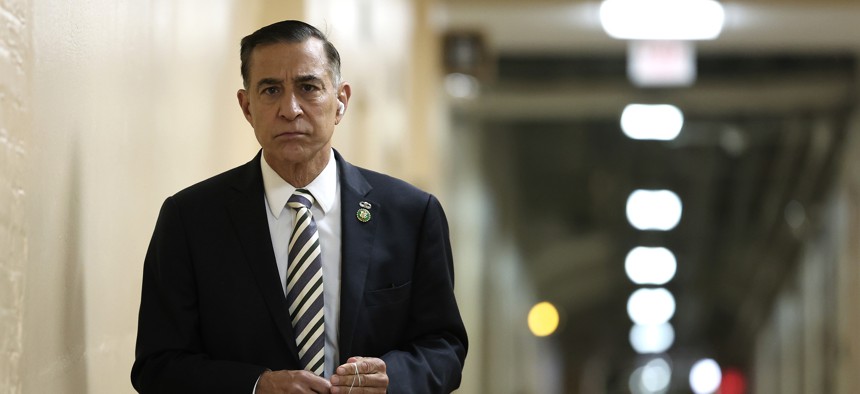Lawmakers seek to bolster JADC2 initiative with ‘transformative’ objectives

Rep. Darrell Issa, R-Calif., said his legislation “enables the right people and programs" in the Pentagon's JADC2 effort. Kevin Dietsch/Getty Images
The legislation would give specific Pentagon officials new responsibilities in the department’s development of an interoperable network across its disparate military domains, with particular focus on the Indo-Pacific region.
New legislation introduced this week seeks to speed up the Pentagon’s ongoing effort to streamline information-sharing across its military domains, with a specific focus on prioritizing enhanced capabilities across the Indo-Pacific region.
The proposal — introduced in the House on Nov. 27 by Rep. Darrell Issa, R-Calif. — attempts to improve the rollout of the Department of Defense’s Joint All-Domain Command and Control — or JADC2 — initiative by assigning components of the department “certain responsibilities for the delivery of essential integrated joint warfighting capabilities.”
JADC2 is focused on combining information from disparate military environments — including those across air, land, sea and cyberspace — into one cohesive network.
The legislation — known as the Joint All-Domain Command and Control Implementation Act — would give specific DOD officials “the authority and resources they need to prototype cutting-edge technology and put it straight into the hands of front-line operators,” according to a press release from Issa’s office.
Issa said in a statement that the legislation “enables the right people and programs at the Pentagon to deploy needed strategies in a transformative way.”
This includes making the deputy chief technology officer for mission capabilities — part of the office of the Under Secretary of Defense for Research and Engineering — responsible, in part, for “identifying new technology and operational concepts for experimentation and prototyping for delivery to the Joint Force to address key operational challenges.”
The bill would also task the chief digital and artificial intelligence officer with “creating and operating a factory-based approach for software development that allows for iterative, secure and continuous deployment of developmental, prototype and operational tools and capabilities.”
While the bill seeks to speed up DOD’s overall JADC2 deployment, it would “prioritize the requirements” of the U.S. Indo-Pacific Command — or USINDOPACOM — which is responsible for operations across a vast and militarily significant region that covers China, Japan, India, North Korea and Australia.
This includes requiring the chief digital and artificial intelligence officer — in consultation with other DOD officials — to submit a report to Congress by March 1, 2024 outlining, in part, “a plan and associated timelines for deploying and demonstrating a joint data integration layer prototype” for USINDOPACOM.
The report would also be required to include a plan “for reaching initial operational capability for a joint data integration layer” across the combatant command, as well as “an assessment of the required type and number of personnel at the United States Indo-Pacific Command to enable sustained growth in JADC2 capabilities.”
Companion legislation to Issa’s bill was also introduced in the upper chamber of Congress by Sen. Joni Ernst, R-Iowa.
“No matter the service branch, commanders should have access to critical capabilities to best equip our warfighters and better coordinate our military’s efforts across air, land, sea, space and cyber,” Ernst said in a statement.
DOD released its JADC2 implementation plan in March 2022, saying at the time that the modernization effort would enable U.S. forces “to ‘sense,’ ‘make sense’ and ‘act’ on information across the battle-space quickly using automation, artificial intelligence, predictive analytics and machine learning to deliver informed solutions via a resilient and robust network environment.”






